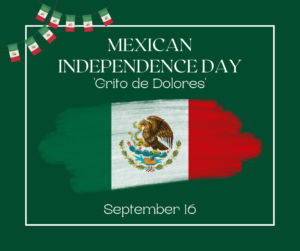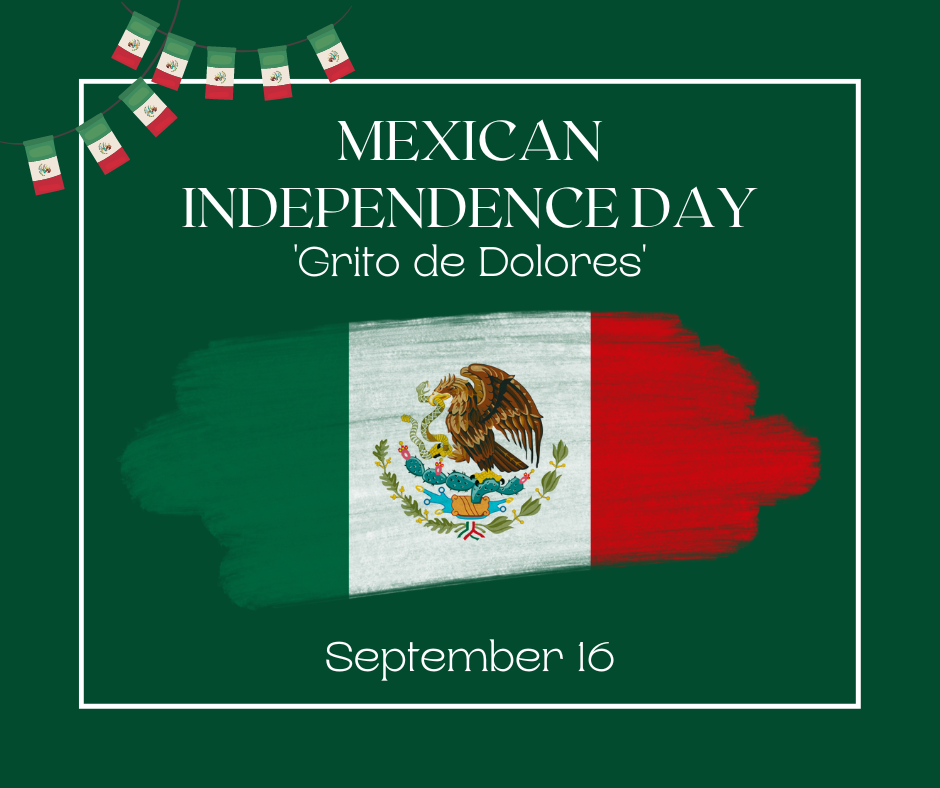Mexico, a land of vibrant colors, rich traditions, and a history as captivating as its landscapes, comes alive every year on September 16th. It’s a day when the entire nation unites in a jubilant chorus of “¡Viva México!” and waves their national flag with unwavering pride. This is Mexico’s Independence Day, a momentous occasion that resonates with passion, patriotism, and a profound sense of identity.
In this blog article, we’ll embark on a captivating journey through the heart and soul of Mexico as we explore the significance, history, and unique celebrations that mark this auspicious day. From the echoes of Miguel Hidalgo’s historic Grito de Dolores to the modern-day festivities that paint the country in a kaleidoscope of colors, we’ll delve deep into the essence of Mexico’s Independence Day, shedding light on the traditions, culture, and the indomitable spirit that define this extraordinary celebration.
So, fasten your seatbelts and get ready to immerse yourself in the enchanting world of Mexico’s Independence Day, where history and culture converge in a fiesta of unparalleled grandeur. Viva México!

When is Mexico’s Independence Day?
First, Mexico celebrates Independence on September 16, but the celebration actually starts on September 15 with the Grito or the cry. People from all over Mexico gather in the central plaza around the National Palace called El Zocalo in Mexico City. At about 11 p.m., the President of Mexico makes an elaborate appearance on the balcony overlooking the Zocalo.
El Grito de Dolores
This ceremony is a reminder of the speech that Miguel Hidalgo y Costilla gave his parishioners of Dolores in 1810 encouraging them to stand up to Spanish rule. This was known as the “Grito de Dolores” or the Cry from Dolores. This speech marked the beginning of the Mexican fight for independence which lasted over 10 years. This cry for independence is repeated every year as the beginning of the Mexican Independence celebration. The main celebration is with the President from the balcony of the National Palace, but many towns both in Mexico and abroad in embassies or Mexican communities imitate this celebration with a person of honor giving the cry.
The bell that hung at the church in Dolores where Hidalgo gave the first cry has since been moved to the National Palace. To start the ceremony, the President is given a Mexican flag and steps out onto the balcony. He then rings the bell to start the ceremony. After getting the attention of the crowd, he starts the cry.
¡Mexicanos! – Mexicans!
¡Vivan los héroes que nos dieron patria! – Long live the heroes who gave us our homeland!
¡Viva Hidalgo! – Long live (Miguel) Hidalgo!
¡Viva Morelos! – Long live (Jose Maria) Morelos!
¡Viva Josefa Ortiz de Domínguez! – Long live Josefa Ortiz de Dominguez!
¡Viva Allende! – Long live (Ignacio) Allende!
¡Viva Aldama y Matamoros! – Long live (Juan) Aldama and (Mariano) Matamoros!
¡Viva la Independencia Nacional! – Long live the National Independence!
¡Viva México! ¡Viva México! ¡Viva México! – Long live Mexico! Long live Mexico! Long live Mexico!
All of these names are people who were critical in the Mexican Independence: Hidalgo, Morelos, Josefa Ortiz de Dominguez, Allende, Aldama, and Matamoros. After each line the President speaks, the crowd responds by yelling “¡Viva!” After the final cries, the President rings the bell again. Soon the church bells in the Zocalo and around the country start ringing as a reply and the President waves the flag from the balcony. Then the Mexican National Anthem is played and fireworks light up the sky. The celebration often continues through the night with fairs, music, and displays in the towns. The next day, parades are held in most towns.
Some years, the celebration is not held in Mexico City. The President can choose to hold the celebration in Dolores (now known as Dolores Hidalgo in honor of Miguel Hidalgo) instead of at the National Palace. Also, many of the Presidents have taken liberties with the words of the Grito and include things that are important to them (some have been more controversial than others). Nevertheless, the foundation of this tradition was based on the events that led to Mexico gaining independence from Spain.
Resources at My Bilingual Life for Mexico’s Independence Day
You might check out this timeline of Mexico’s history. It will give a solid foundation of the major events in Mexico’s history.
Read more about Miguel Hidalgo.
Read about the Mexican National Anthem.
Here is a related video about Mexico’s Independence Day on our YouTube Channel.
[embedyt] https://www.youtube.com/watch?v=KPiSuYCxK-c[/embedyt]

Leave a Reply